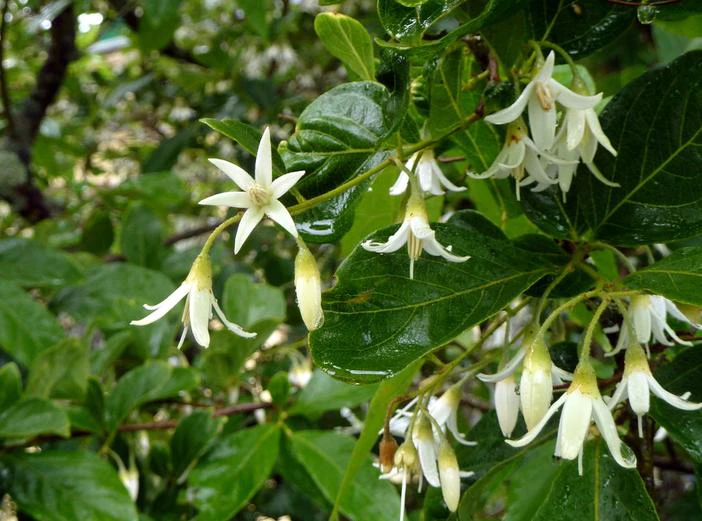Japanese Snowbell
(Styrax confusus)
Japanese Snowbell (Styrax confusus)
/
/

Wendy Cutler
CC BY-SA 2.0
Image By:
Wendy Cutler
Recorded By:
Copyright:
CC BY-SA 2.0
Copyright Notice:
Photo by: Wendy Cutler | License Type: CC BY-SA 2.0 | License URL: https://creativecommons.org/licenses/by-sa/2.0/ | Uploader: wlcutler | Publisher: Flickr









Estimated Native Range
Climate Requirements for San José, Costa Rica
| This Plant | Your Site | Plant Suitability for Your Location | ||
|---|---|---|---|---|
| • Precipitation | 12" - 82" | 103" | Aquatic | Aquatic |
| • High Temp. | 71°F - 94°F | 91°F | Your summer temperatures are normal for this plant. | Excellent |
| • Low Temp. | -10°F - 62°F | 70°F | OK, but your winter temperatures are warmer than normal for this plant | OK |
This plant may not grow well at your location - your precipitation is too high.
Summary
Styrax confusus, commonly known as Japanese Snowbell, is a deciduous tree native to the understory of temperate forests and woodland areas in East Asia. It typically grows at a moderate rate to a height of 8-15 feet (2.4-4.6 meters) and a width of 6-10 feet (1.8-3 meters). The tree is noted for its graceful, spreading form and horizontally tiered branches. During the summer, it produces an abundance of white, bell-shaped flowers that hang beneath the foliage, creating a striking display. The flowers are fragrant and attract pollinators. After flowering, it bears olive-shaped drupes that mature to a greenish-brown color.
Japanese Snowbell is valued for its elegant appearance and showy flowers, making it a popular choice for ornamental plantings in residential gardens, parks, and along streets. It is also used as a patio or specimen tree. This species is relatively low-maintenance, requiring medium amounts of water and thriving in a range of soil types, including clay, loam, and sandy soils, provided they have medium drainage. It prefers full sun to part shade conditions. While generally disease-resistant, it can be susceptible to pests such as scale insects and borers. Gardeners should be aware that it does not tolerate drought or waterlogged conditions well.CC BY-SA 4.0
Japanese Snowbell is valued for its elegant appearance and showy flowers, making it a popular choice for ornamental plantings in residential gardens, parks, and along streets. It is also used as a patio or specimen tree. This species is relatively low-maintenance, requiring medium amounts of water and thriving in a range of soil types, including clay, loam, and sandy soils, provided they have medium drainage. It prefers full sun to part shade conditions. While generally disease-resistant, it can be susceptible to pests such as scale insects and borers. Gardeners should be aware that it does not tolerate drought or waterlogged conditions well.CC BY-SA 4.0
Plant Description
- Plant Type: Tree
- Height: 8-15 feet
- Width: 6-10 feet
- Growth Rate: Moderate
- Flower Color: White
- Flowering Season: Spring, Summer
- Leaf Retention: Deciduous
Growth Requirements
- Sun: Full Sun, Part Shade
- Water: Medium
- Drainage: Medium
Common Uses
Bee Garden, Bird Garden, Fragrant, Low Maintenance
Natural Habitat
native to the understory of temperate forests and woodland areas in East Asia
Other Names
Common Names: Japanese Snowbell
Scientific Names: Styrax confusus, Styrax confusus var. confusus, Styrax confusus var. superbus, Styrax fukienensis, Styrax fukiensis, Styrax jucundus, Styrax juncudus, Styrax mollis, Styrax philadelphoides
GBIF Accepted Name: Styrax confusus